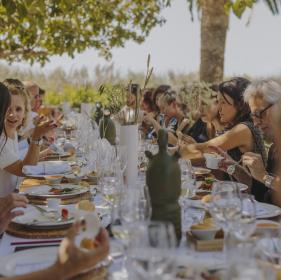IMM COLOGNE 2020: STILL INDOORS OR ALREADY OUTSIDE?
- “Das Haus 2020” by MUT Design brings the Spanish outlook on life to imm cologne
- Young design team MUT from Valencia to create “Das Haus” as guest of honour
- The Spaniards’ design addresses the longing for an interior concept in which possibilities for retreat can be sustainably combined with outdoor living.
“Das Haus” is erected at the international furniture and interiors fair imm cologne: a design that points the way ahead to how we might live in future. For seven days in January every year, it’s constructed from scratch, painted and lovingly furnished, visited by thousands, discussed and photographed. The simulated interior in Cologne – a combination of architecture, interior design and furnishings – gives a designer or design team the opportunity to make their own personal statement on contemporary living. In a wide-ranging variety of styles – from minimalist to extravagant, from matter-of-fact to sensuous – the installation blends current trends and products into a finely tuned interior design. Koelnmesse has nominated the young Spanish design team MUT to be its guest of honour for the ninth edition of “Das Haus” at imm cologne 2020 (13.-19.1.).
“A project like ‘Das Haus’ gives a designer a unique opportunity to create something that’s totally independent of production and market conditions while simultaneously understanding and rediscovering their designs in terms of how they impact the space,” says MUT, describing the challenge of designing a fully furnished house for the international furniture and interiors fair imm cologne.
“In our design, we want to go one step further and explore the potential architecture and interior design have for opening the space up to the outdoors.” As a result, the architectural dimension of “Das Haus” is particularly significant this time round. “Mediterranean life is synonymous with outdoor living,” says MUT of the inspiration the team draws from its traditional lifestyle culture. “Our houses have always integrated a little bit of nature into their interiors.”
Founded in 2010 by Alberto Sánchez and Eduardo Villalón, the design studio is one of the most successful teams of the “new wave” in Spanish design. In their native Valencia, a hotspot of Spanish design that’s bolstered by the traditional furnituremaking and ceramics industries round about, the team creates furniture, carpets, tiles and lamps for the interiors sector, as well as designing hotels and exhibitions. All their work is characterised by a tendency towards simple, soft, circular shapes. Their creations – which have won major accolades such as the Red Dot award – exhibit forms with a vaguely unfamiliar quality or translate a familiar shape into a modern design. Their international clientele includes firms such as Expormim, GAN, Ex.t, Sancal, Preciosa Lighting, Bolia, E interiors, Harmony Inspire, Missana and LZF.
The name MUT comes from Valencian (a variant of Catalan) and translates roughly as “Quiet!” – a request for silence when you want to make yourself heard. But the designers can also identify with the German meaning of “Mut”, i.e. courage: “It rounds off the way we see ourselves perfectly, because nowadays it takes a lot of courage to stand up for your own principles instead of going with the flow dictated by trends,” says the Spanish team. And it’s definitely true to say that emotionality and an expressive design language are the most outstanding characteristics of their work.
With MUT, “Das Haus” is deliberately remaining within the sphere of European design this time round, while simultaneously selecting a decidedly progressive team with a contemporary profile. “MUT isn’t so much a classic design team as the kind of multidisciplinary community of like-minded people that exists in all sorts of constellations nowadays: modern, flexible and creative. They work in a surprisingly diverse range of fields: they’re product designers, creative directors, graphic designers, interior designers and curators, all rolled into one,” says Dick Spierenburg, creative director of the imm cologne, on the decision to nominate MUT. “As a result, they stand for a new generation of design studios that’s responding to a changed market landscape in which huge demands are made of designers’ adaptability and inventiveness.”
“Das Haus” – half portrait of the designer, half model home
The “Das Haus – Interiors on Stage” installation simulates a residential house at the international furniture and interiors fair imm cologne. The fair constructs an approximately 180-square-metre house in the middle of the Pure Editions area, Hall 3.1, designed according to the plans of a designer who is newly nominated every year. The furniture, colours, materials, lighting and accessories are also selected by the designer, rendering the finished house an individual, integrated configuration of interior design. The project thereby deals not just with contemporary furnishing trends but also with people’s aspirations as well as social change.
“Das Haus” from 2012 to 2019 – eight ideas of home
“Das Haus” was staged for the first time in 2012 and the Indian-British design team of Nipa Doshi and Jonathan Levien was nominated to introduce the new format. They installed a seemingly organically grown space that allowed inhabitants and cultures to interact in a spirit of communication. In 2013, the Italian product designer Luca Nichetto introduced the next installation of the design event with an elegant ensemble, the construction open on all sides. In 2014, the Danish designer Louise Campbell turned “Das Haus” into a low-tech place of calm within the bustle of the fair, representing the reconciliation of the most diverse human characters and preferences in style. In 2015, the Chinese architect couple Rossana Hu and Lyndon Neri challenged traditional home life rituals by taking “cages for living” packed full with classic and modern furniture and setting them in a spatial construction that recalled the narrow alleyways of Shanghai, turning visitor into voyeur and calling for reflection. German designer Sebastian Herkner was on home turf in 2016. With his circular “Haus”, he created a house that was airy and fully accessible – with no barriers to people or cultures – and limited only by adjustable curtains in order to permit changing perspectives. The transatlantic “Haus” by Todd Bracher that trade fair visitors could experience in Cologne in 2017 drew its inspiration from paring down to the essentials. While the Czech designer Lucie Koldova transformed “Das Haus 2018” into an experiment about the emotional dimension of various lighting compositions, Rotterdam-based Studio Truly Truly turned its idea of mood-driven, “fluid” living into reality with a design consisting of organically interlinked zones.
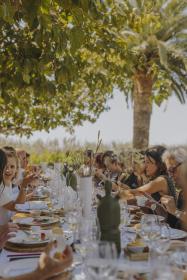 (c) Koelnmesse GmbH
(c) Koelnmesse GmbH
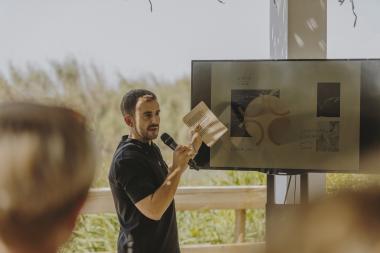 (c) Koelnmesse GmbH
(c) Koelnmesse GmbH
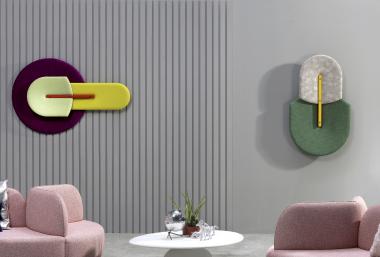 (c) Koelnmesse GmbH
(c) Koelnmesse GmbH
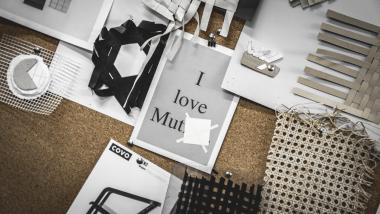 (c) Koelnmesse GmbH
(c) Koelnmesse GmbH
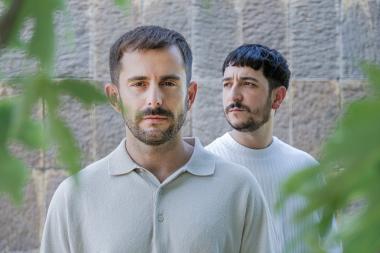 (c) Koelnmesse GmbH
(c) Koelnmesse GmbH
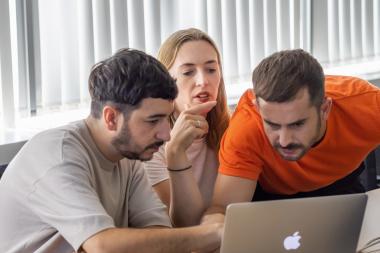 (c) Koelnmesse GmbH
(c) Koelnmesse GmbH
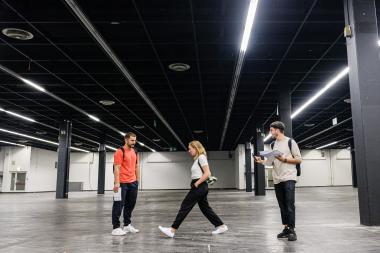
Koelnmesse GmbH
Design Press Talk imm cologne 2020 in Valencia on 18 September 2019/ Studio


